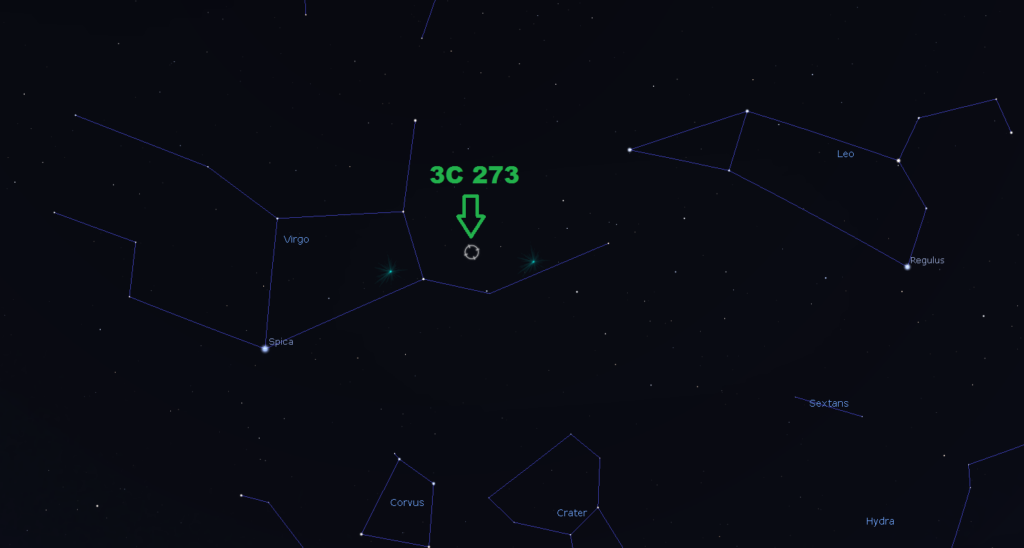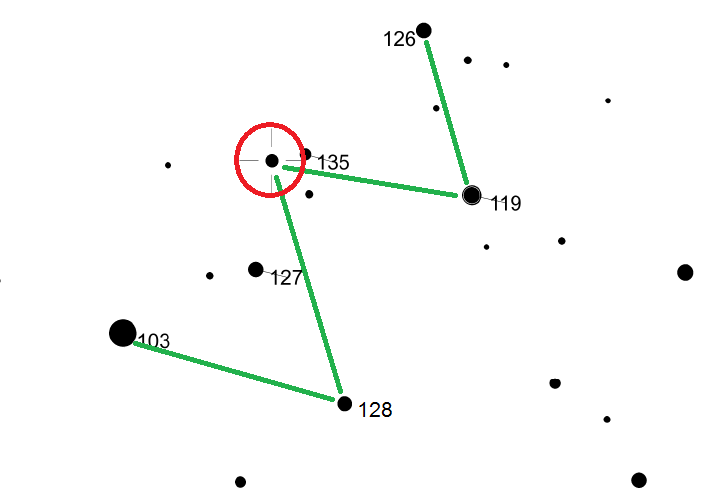On my list of objects to view from my own telescope (a 1994 Celestron 8” SCT), has been Quasar 3C 273. Aesthetically speaking, this object has zero value, it looks like a very faint star. However what makes this object so interesting is its origin and its distance.
Quasars are the compact, central region of a massive galaxy surrounding its super-massive black hole. What powers these quasars are the accretion discs around the super-massive black holes. As the theory goes, quasars were more common in the earlier universe which is why most are so far away from us (i.e. – the further away an object we see from Earth with further back in time we are seeing the object). While 3C 273 is visually unimpressive, the fact that what you see the super hot, luminous accretion disc of material spinning around a super-massive back hole makes the observing of this object pretty cool in my book.
The other amazing aspect of this observation is the distance. Various sources differ on the distance of this object, anywhere from 1.918 billion light years out to 2.5 billion light years. The fascinating aspect of this, at least for me, is that photons that I observed, that interacted with my telescope and my eye’s retina were emitted from 3C 273 and had be traveling through space for over 2 billion years! Put another way, that’s a little more than 14.5% of the history of our universe (13.7 billion years old) or about 44% of the history of our Earth (4.5 billion years old). 2 billion years ago here on Earth there was no life on land, only simple organisms in the oceans; Oxygen was starting to replace CO2 in our atmosphere.
Finding 3C 273 was a bit tricky due to how dim it is, it varies from 11.7 to 13.2 but averages about 12.8. I found the following web site very helpful in locating and observing 3C 273, http://washedoutastronomy.com/content/3c-273-quasars-are-easy. The coordinates of 3C 273 (J2000 are RA: 12 : 29.1 DEC: +02 : 03.1)

Once I was in the general area, it was difficult to isolate which faint object was 3C 273. Using the finder charts that are include in the link above made it a bit easier. Below is a photo that will approximate the view. I looked for a “W” shape and based on the charts I knew the top center of the “W” was the quasar. It is the brightest of the objects that make up the central part of the “W.”

Here is an excerpt from one of the charts. 3C 273 is about 12.8 magnitude and therefore should be brighter than 13.5 mag. star off to the right (just outside the red circle in the chart below).

It took a little going back and forth but I was finally able to nail down the orientation of the stars and patterns on my charts/printed materials with the flipped view from my 8″ SCT. This was a great hunt!
Clear Skies!
-Mike


